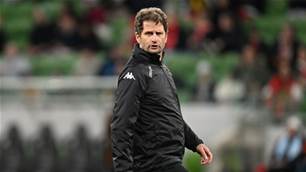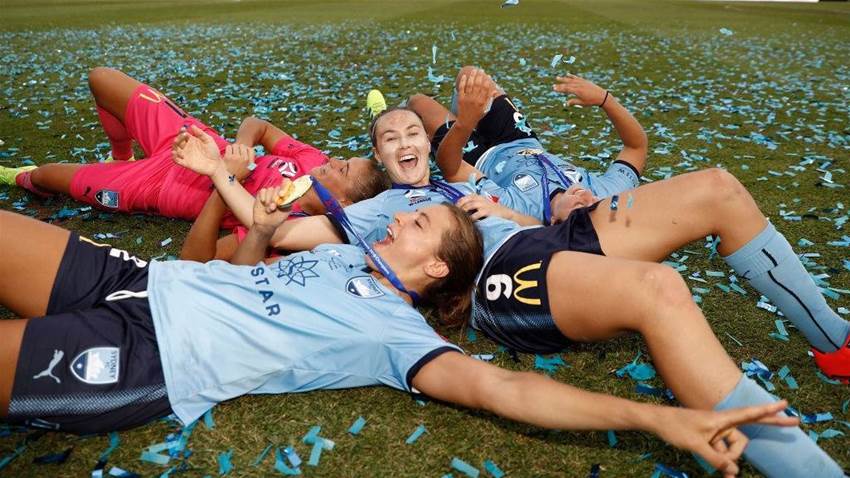We all know that without the W-League, which will commence it’s 13th season later this year, we would not have the strength in the Matildas side that currently exists.
But thanks to the recent COVID-19 epidemic, there’s been many discussions throughout the sports world about its financial impact on women’s sport, in particular the W-League.
Sarah Walsh, head of game development at Football Federation Australia, has stated that there shouldn’t be a change in commitment from the clubs, but is it possible to predict how the remainder of this year and beyond will play out?
Without a women’s national league, there would be many opportunities lost for players, both professional and grassroots, which aren’t just related to on-field activities.
Loss of a quality national league
Firstly, no W-League means no national competition. That ends the domestic pathway for women at NPLW.
A state-based NPLW competition would not be able to provide an adequate challenge for current W-League players, and has the very real potential to reduce the quality of the Australian national team.
A revised NPLW format would also lack the international competition - unable to attract the talent that the W-League has seen - and could have players heading overseas before they’re ready, which we've seen from men's football often has a negative impact on their development.
Recent performances of national teams with strong domestic competitions such as England, China and the United States have been linked back to their investment in women’s football and we wouldn’t want our development to fall behind, especially when Australia is currently in such a strong position.
Tellingly, this crossroads would further weaken football's position in the current code swaps contest within Australia, with Ellyse Perry choosing cricket over football after juggling both for many years and Jenna McCormick committing to football after winning a premiership in AFLW. Without a W-League, football's position becomes a lot less attractive.
Development of junior and grassroots leagues
Junior sport is booming - especially when it comes to football.
Last season (2019), Football Federation Victoria added a new grade in Senior Women, State League Five.
This goes a long way to show how many women over 16 years are joining the sport, without even looking at junior participation, which is currently second overall behind netball.
With the W-League really coming into its own over the last four to five years, you can see the effects on the juniors and families that go to games and cheer on their favourite teams and players while wearing their team colours and jerseys.
The young fans who are idolising these players need to have the W-League to aspire to play in one day.
The W-League also provides a stepping stone to life after football, whether it’s moving into media opportunities, or in Clare Polkinghorne’s case, stepping into a player / assistant coaching position at Brisbane Roar and a tentative advisory role within the FFA.
Financials
As the W-League develops further and the profile of women’s sport continues to grow, greater sponsorships and television revenue for players, teams and the league itself are sure to present themselves.
Many players rotate between seasons of the W-League and NWSL in the United States, which allows these players to make a living from playing football, which is a dream for most.
Individual sponsorships for players as a result of their profile can bring in additional income, such as Ellie Carpenter with VISA, and Mackenzie Arnold and Steph Catley with Puma.
These opportunities may not have presented themselves if not for the players competing in a national, broadcasted competition such as the W-League.
Reduced profile of the sport and its stars
A lack of a national football league could have devastating effects on the profiles of both the sport and its players.
All you have to do is look at the profile of Sam Kerr and the brand she created for herself, and the sport, while developing her craft at Perth Glory. The success of the Matildas has definitely thrust a spotlight on the sport and the league, and it’s up to the administrators and clubs to ensure it's able to continue to grow.
One current concern is that the majority of players are only signed for single-year contracts, so once the season ends they are off contract and unable to partake in any potential promotional opportunities for the club.
Understandably, this is due to many footballers heading overseas to partake in other competitions in the off-season. But by signing multi-year contracts, clubs and players have the ability to build a solid brand partnership.
As seen with Kerr, these partnerships can bring so much exposure, prestige and enhanced security to the league when operated properly; dedicated fans and an increased sense of a unique W-League club identity.
That's a glimmer of what the W-League has to gain. But right now, Australian women's football has so much more to lose.
Want the best women’s football news in your inbox? Sign up here!
Tap here to follow us on Insta for the best football news daily!
Related Articles

Leckie seals new marquee deal as Good, Maclaren head to Asia

'Timing not right': Montemurro's verdict on Matildas vacancy


















